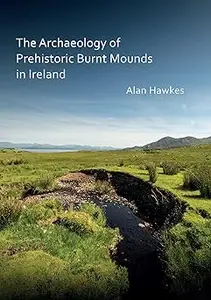
Free Download Alan Hawkes, "The Archaeology of Prehistoric Burnt Mounds in Ireland"
English | ISBN: 1784919861 | 2018 | 342 pages | PDF | 20 MB
This book details the archaeology of burnt mounds (fulachtaí fia) in Ireland, one of the most frequent and under researched prehistoric site types in the country. It presents a re-evaluation of the pyrolithic phenomenon in light of some 1000 excavated burnt mounds. Charcoal-enriched soil, along with spreads and mounds of heat-affected stone, are one of the most common types of site found in Ireland, largely as a consequence of numerous discoveries made in the course of road building. They represent an accumulation of firing material associated with a prehistoric pyrolithic technology, which involved a process of heat transfer that centred on the use of hot stones immersed in water-filled troughs or placed in small, lined/unlined pits/ovens. During the Bronze Age, the use of this technology became widely adopted in Northern Europe, particularly Ireland, where the phenomenon is represented in the field as a low crescent-shaped mound. Even though burnt mounds are the most common prehistoric site type in Ireland, they have not received the same level of research as other prehistoric sites. This is primarily due to the paucity of artefact finds and the unspectacular nature of the archaeological remains, compounded by the absence of an appropriate research framework. This is the most comprehensive study undertaken on the use of pyrolithic technology in prehistoric Ireland, dealing with different aspects of site function, chronology, social role and cultural context.
